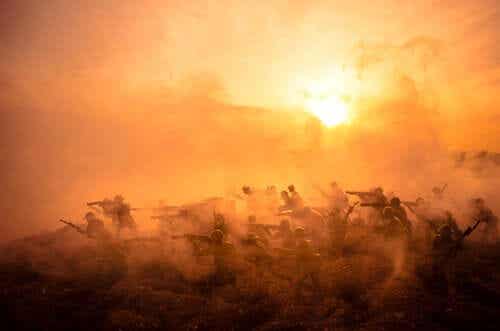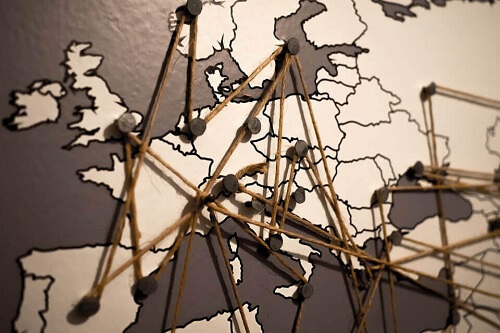Insurgent movements are a complex issue. In this article we will try to define it and identify the factors that make its success possible.

Last update: June 15, 2020
Talking about insurgent movements can be misleading. For example, is the Islamic State an insurgent movement or a terrorist group? The answer is complex, also due to the changes this group has undergone. However, in order to define insurgent movements it will first be necessary to understand what is meant by insurrection.
But before giving a definition of insurrection, let's see some of the groups that over time have been included among the insurrectional movements. Among them, the best known are the Islamic State, Al Qaeda, Boko Haram, the FARC, the Taliban, Hezbollah, Hamas, ETA and the IRA. Although some of these have now disappeared, at certain moments in their history they have been considered rebel groups.
Definition of insurrection
Finding a clear and precise definition of insurrection is a somewhat difficult task. However, it is possible to highlight some points common to the different definitions. In this sense, the insurrection can be considered as one series of actions carried out by a minority within a state with the aim of imposing political change. We therefore discover that the goal is above all political.
The insurrection uses propaganda and military pressure to persuade or intimidate the population. Indeed, the goal is to gain popular support. The recognition and acceptance by the population will therefore be fundamental and will determine, to a large extent, its success or failure.
Finally, the insurrection is characterized by the inequality of forces. Since the state is typically more powerful, insurrections opt for asymmetrical and prolonged clashes in which psychological warfare becomes the main tool.
"Like a wild animal, the truth is too powerful to be caged."
-Veronica Roth-
How insurrectional movements are created and consolidated
In order to start an insurrectionary movement, the following factors must be considered:
- Create a relevant political identity: insurgents must ensure that the identity they propose becomes more important than others; to the point of being willing to defend it with the fight.
- Marrying a tempting cause: it must include a certain discontent shared with the population.
- Attract popular support: If the following factors are met, this becomes more likely.
- Have solid leadership: good leadership gives coherence, coordination and credibility to the group.
- Prevail over rival groups: Being stronger than other groups or even collaborating with them can determine the survival of the insurgent movement.
- Having a hiding place: hiding places or shelters are very important for the survival of the group.
- Look for external support: support from other states can be decisive.
- Expect wrong behavior from political authorities: a bad action of the state can cause popular support for the insurrection.
"As a child of the people, I can never forget that my only goal must always be their prosperity."
-Author unknown-
Classification of insurrectional movements
Generally the distinction is between insurrectional movements and national liberation movements. In insurrectional movements, citizens oppose a given government for ideological, ethnic, economic, etc. reasons. In national liberation movements, on the other hand, the insurgents clash with a regime supported or controlled by foreigners.
However, there are also other possible classifications, such as that based on the objectives pursued by the movement. This classification gives rise to three different types:
- Power and political project: the goal of these groups is to take control of the state to establish a new regime.
- Political power and territory: in this case, the groups aim at the end of a foreign occupation and aim, in other words, at national independence.
- Local or tribal political autonomy, creating or maintaining a situation beyond the control of the state: these groups seek to undermine the authority of the government of a partially or totally failed state and then take power.
The five pillars of the insurgent movements
Insurgent movements can use five strategic tools to achieve their goals. That is: armed struggle, propaganda, assistance to the population, social and political activism and international relations.
- Armed struggle: the use of violence is very common in insurrections, the techniques used are usually guerrilla warfare and, as a support, terrorism.
- Propaganda: propaganda aims to conquer the minds and hearts of the population, both nationally and internationally.
- Assistance to the population: in order to obtain support and mobilize the population, social activities and assistance are often another strategy used by rebel groups.
- Social and political activism: the creation and infiltration of civic associations, trade unions and even political parties are often employed by insurgent movements.
- International relations: international support is generally a great advantage, which is why these groups try to get it.
As can be deduced from these guidelines, insurgent movements resemble other violent groups who make use of terrorism and guerrillas. Distinguishing them is not always easy. However, the factors that make its birth and success possible are well known.


























